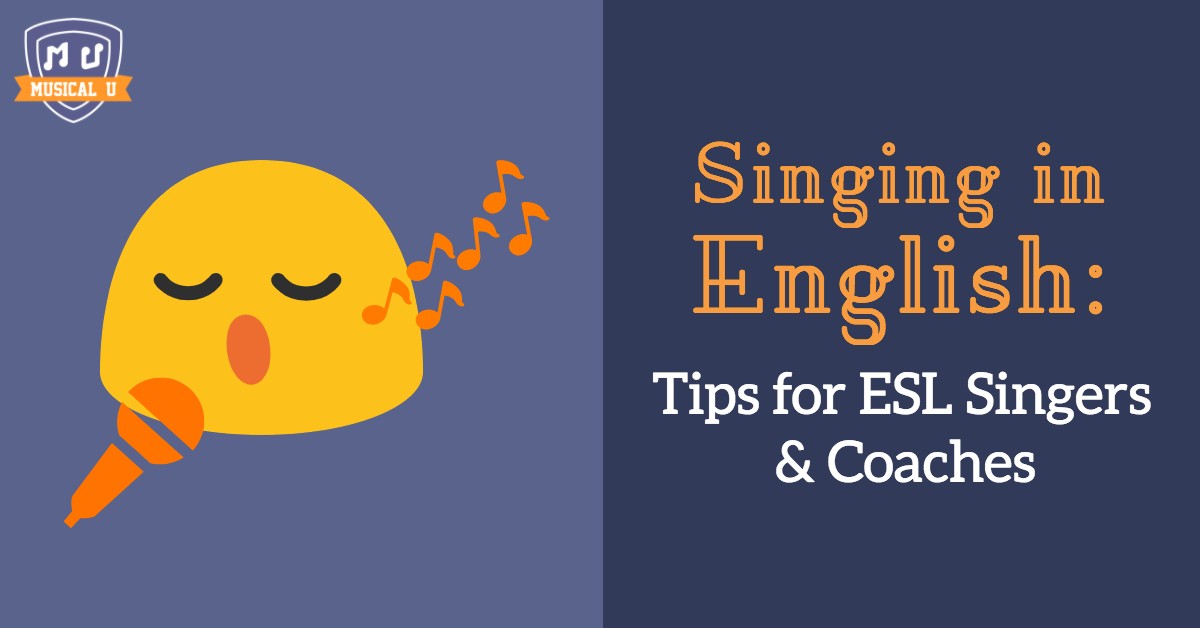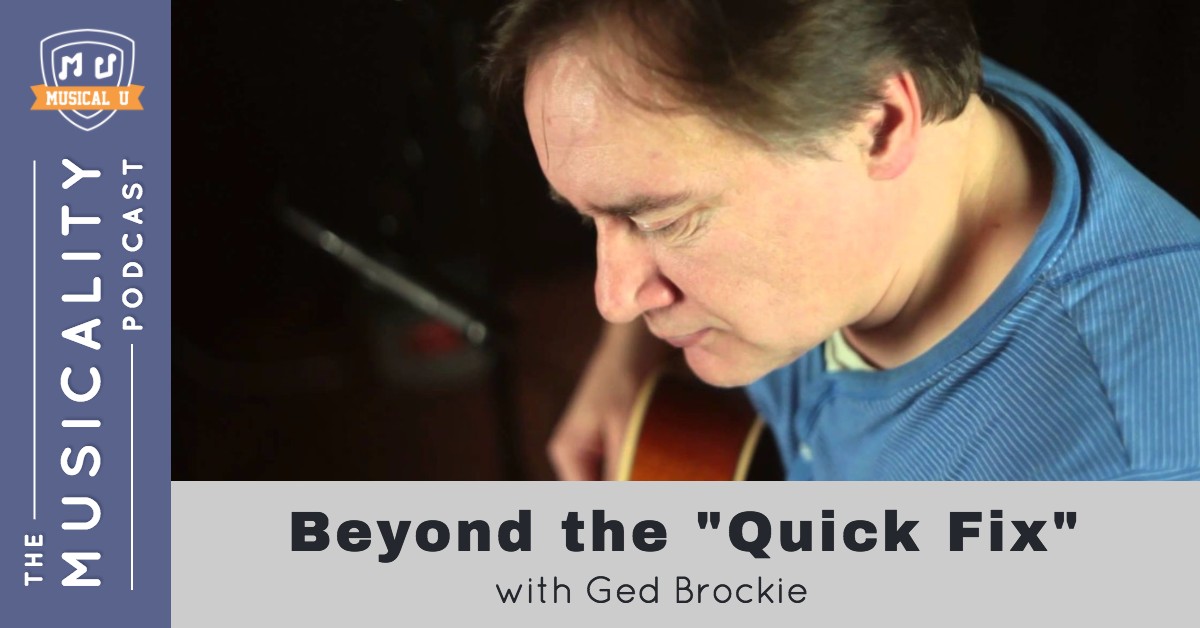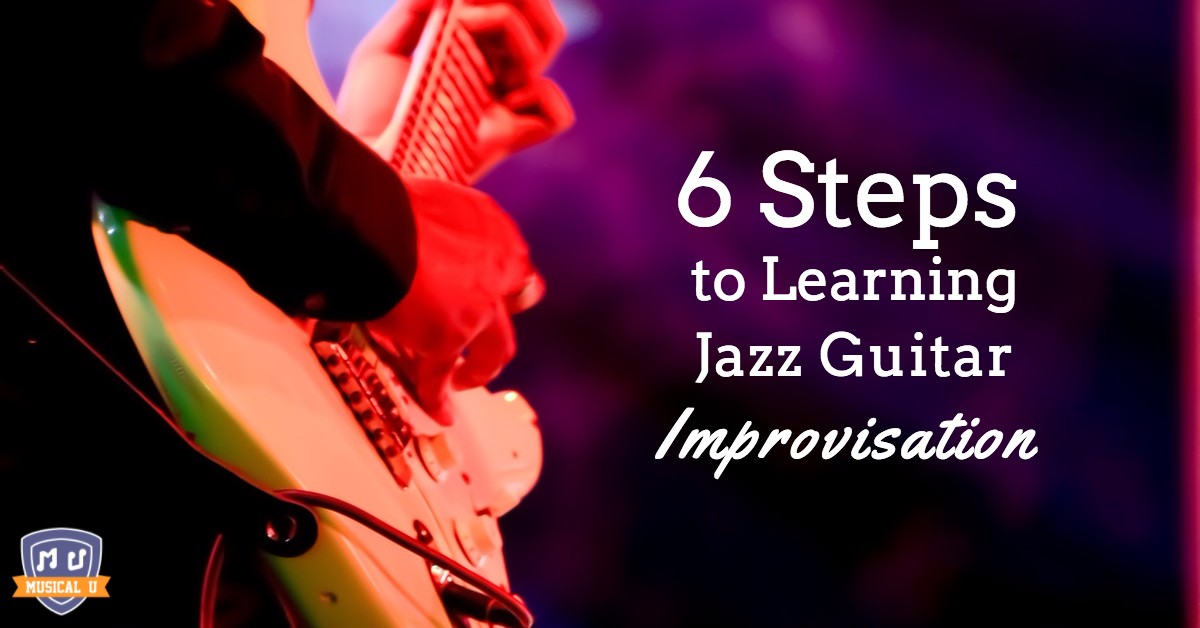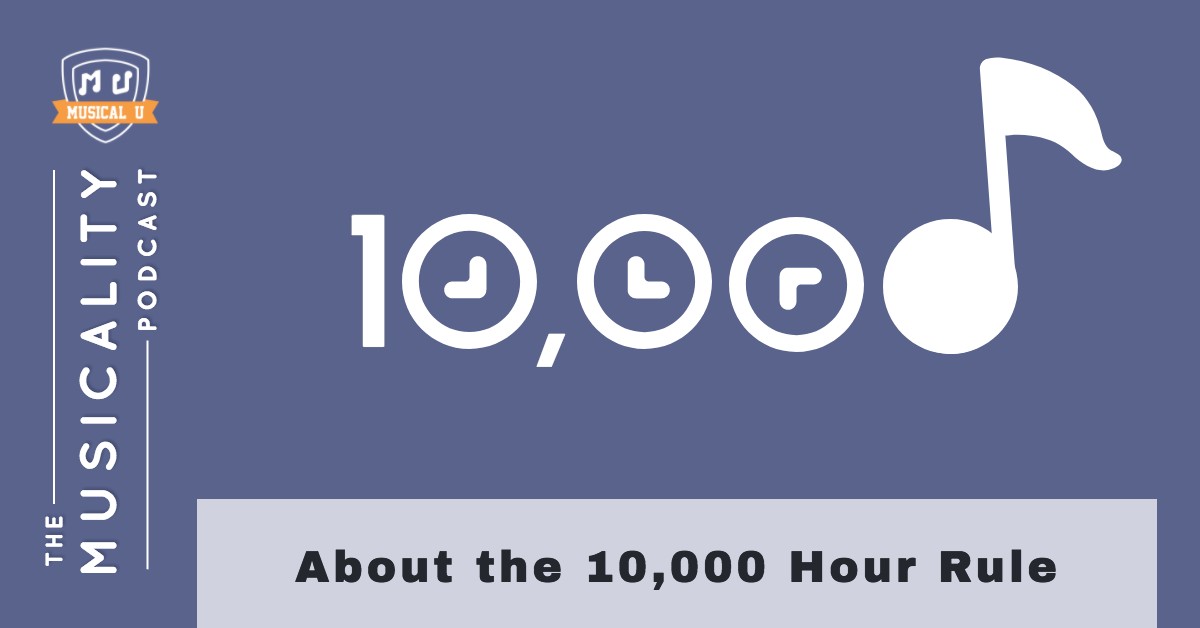When faced with learning a complex new skill, it’s easy to feel the temptation to cut corners. Unsurprisingly, this can really hurt you in the long run as a musician.
This week, we’re taking a step back, slowing it down, and focussing on how to achieve your long-term musical goals by building good practice habits and foundations, rather than using quick fixes and band-aid solutions.
First, vocal coach extraordinaire Gino Burgio has some valuable advice for ESL singers on how to continuously improve their pronunciation, and for their coaches on how to best encourage their students. The Musicality Podcast interviews Ged Brockie, professional composer and teacher, who shares the most important thing you can do while studying music, and explains how it helps you become a natural musician in the long run. Jazz aficionado Zac Green explains how to build a solid foundation for playing jazz guitar (read: improvisation!). And rounding out the week is a podcast episode on the 10,000 hour rule, and how musicians can apply it to become masters of their craft.
Last, and certainly not least, Musical U’s own Andrew Bishko gives advice for new piano teachers on putting together engaging, student-focussed lessons on TimTopham.com.
Singing in Tongues
Learning a second language is hard enough as it is. New alphabets, words, and sentence structures are half the battle – the other half is being able to speak with a convincing accent.
 Imagine worrying about all that, and on top of that, needing to ensure you’re in tune and on beat.
Imagine worrying about all that, and on top of that, needing to ensure you’re in tune and on beat.
Welcome to the challenge of singing in English as a non-native speaker!
Thankfully, Gino Burgio has tips for both the ESL singer and those who coach them. In Singing in English: Tips for ESL Singers and Coaches, he details how to understand and teach the intricacies of English pronunciation, and encourages students and teachers alike to take advantage of modern technology to make the learning experience as holistic and immersive as possible.
Every language has their own particulars that must be learned if you are going to sing the lyrics accurately. For classical singers, especially those that sing opera, learning the languages of Europe are especially important as most opera originates from Europe. Schmopera discusses four vowel sounds that singers will be challenged by when singing in a foreign language.
When learning a foreign language, there are certain muscle movements that create the particular sounds in that language. For native English speakers, it can be difficult to ingrain sounds like the rolled r, for example. When learning to sing in a new language, practicing the idiosyncrasies of the new language are imperative as they will lead to muscle memory. The Worship Vocalist shows more examples of how muscle memory is important to singers.
It can be difficult enough to memorize lyrics in your native language, so it is naturally more difficult in a second language! Many singers struggle with consistently memorizing the words and melody that they are preparing to sing. Hark Music has five fantastic tips that’ll help you have that song memorized in no time!
Steady Success
In spite of what interviews with uniquely lucky artists might tell you, success in music rarely happens overnight. The vast majority of us will need to spend hours playing and playing and playing to perfect our skills and get gigs and recognition.
 Unfortunately, there are no “quick fixes” if you really want to become good – you’re going to have to dedicate a large chunk of time to your practice, and be ready to spend extra time on the areas that you struggle with.
Unfortunately, there are no “quick fixes” if you really want to become good – you’re going to have to dedicate a large chunk of time to your practice, and be ready to spend extra time on the areas that you struggle with.
Professional musician and teacher Ged Brockie knows all about getting into music for the long haul. A professional musician for over 30 years, he has performed all over Europe and the UK, composed music for film and television, launched a music festival and a summer school, published two book series for self-taught guitarists, and launched the Guitar and Music Institute website. And it all started with the purchase of a £60 guitar when Ged was just 15!
In Beyond the “Quick Fix”, with Ged Brockie, he gives insights on how to resist the “quick fix” to really develop your musicality, how to hone your entrepreneurial skills (which are crucial for the modern musician!), and the connections between theory, technique, and musicality.
It’s no secret that we are big fans of the Guitar and Music Institute Podcast here at Musical U. While the title of this episode implies that it is only for guitarists, there are many practical tips for any musician looking to make their hobby a paid profession.
Ged talked extensively about the music business and finding your own niche to be successful. While the world has gotten more advanced in communication, that has also made building your career more complex as well. For some expert tips on finding success, That’s My Gig shares some excellent strategies for success.
In the last decade, the explosion of social media and mobile devices have changed the way that we communicate with the world. It wasn’t too long ago that the word “selfie” was not a part of our vocabulary! With these changes, artists need to also amend their approach to building a community of followers. Learn more about how to encourage your fans to post pictures of your performances from The Music Site.
Mastering Jazz Guitar
Jazz unfortunately has a certain reputation of “inaccessibility” – musicians often assume that the complicated rhythms and improvised melodies that jazz is famous for will prevent them from ever being able to play it.
We won’t lie to you: improvisation is, in fact, challenging. There’s no one way to learn it, and it does require some out-of-the-box thinking and creativity on your part.
 The good news: building a good foundation comprised of certain chords, chord progressions, arpeggios, and licks will equip you with the basics of jazz guitar improvisation. From there, you can progress to building your own licks in no time!
The good news: building a good foundation comprised of certain chords, chord progressions, arpeggios, and licks will equip you with the basics of jazz guitar improvisation. From there, you can progress to building your own licks in no time!
Head over to 6 Steps to Learning Jazz Guitar Improvisation to kickstart your jazz guitar journey, with Zing Instruments’s Zac Green’s easy-to-follow tips to get you playing jazz guitar in no time.
Starting improvisation can be very intimidating! Learning arpeggios is a great way to start, as these are chord tones that will sound good over the chord progression. We talked about this topic recently on The Musicality Podcast. GypsyandJazz.com takes it another step further with a great lesson on improvisation using arpeggios.
Zac mentioned one of the major chord progressions (often referred to as chord changes) that every jazzer will want to have under their fingers: the II-V-I progression. Once you have that down, there is a whole world of additional standard changes that are preferred by jazz musicians. Expanding your vocabulary to include the most important of these progressions will help you gain confidence in your ability to improvise over any chord change! Jazz Guitar Licks has compiled fourteen of them to get you started.
After getting the blues in your head, arpeggios under your fingers, and chord changes in your ears, it’s time for some sweet licks. Musicians will listen to great albums and transcribe solos so that they can incorporate some of these lines into their own improvisation. If you want to learn how to play licks, jazz etudes are another great place to start. David Magyel has a great jazz improvisation lesson to help get you started!
10,000 Hours to Greatness
Mastery of any skill takes time – a lot of it.
Malcolm Gladwell, for one, has proposed an exact amount of time. He hypothesizes in his book Outliers that mastering a skill takes 10,000 hours of practice, whether you’re a chef, pro skateboarder, welder, or musician.
 Though there is at least some truth to this rule, it also comes with many asterisks. For example, how you practice is just as (if not more important than!) how much you practice.
Though there is at least some truth to this rule, it also comes with many asterisks. For example, how you practice is just as (if not more important than!) how much you practice.
Also, the 10,000 hours refers to the amount of time you potentially need to put in for total mastery. Think about all the milestones you’ll reach on your way there – you don’t need to be a “master musician” in order to improvise beautifully, play by ear, or write beautiful music. You’ll be happy to hear that these skills will come to you long, long before you come close to the 10,000 hour mark!
In About the 10,000 Hour Rule, we discuss how you can make the most out of your practice time (regardless of whether you make it to 10,000 hours or not!), how big of a role talent plays in all this, and how you can enjoy your long and winding musical journey!
It’s easy to get wrapped up with that big number of 10,000 hours and forget that there are many accomplishments along the way. No matter what your goals, you can speed up your progress by using more effective methods to practice music! We talk a lot about deliberate and interleaved practice here at Musical U, and we’re not the only ones; Dr. Flegg provides a great lesson on interleaving on his Structured Practice Method website!
The beauty and simplicity of aspiring for 10,000 hours is that you are able to map out a process for getting to mastery on your instrument. It’s not so much reaching that amount of time, but deliberately planning your practice to aspire to meet your musical goals. There are numerous stories from other musicians on how they put a plan into action and achieved their goals. Read more about how Jason Haaheim gained freedom in his musicality and ask yourself, “am I willing to do the work?”
And, above all, remember that the reason we are all learning music is because of a passion deep within us. While there will be struggles along the way, enjoying playing and the process of improving is very important! Music Lab discusses how to keep lessons fun for children, with advice that transfers nicely to adult learners!
Modern Piano Pedagogy
Have you mastered the piano, and want to help others do the same? A career in teaching may be right for you. The joys
Piano theory may stay the same, but teaching styles are constantly changing and evolving. Now more than ever, music pedagogy has seen a shift away from a strict, one-size-fits-all approach, and towards a more tailored approach that has the student’s interests, cultural background, and musical strengths in mind.
Musical U’s very own Content & Product Manager Andrew Bishko shares his formula for combining his decades of piano wisdom with a personalized, student-centric teaching approach on Tim Topham’s website for creative music education.
In How To Be A New Piano Teacher with Old Teacher Wisdom, Andrew talks about structuring lessons, using students’ home lives and cultural milieus as starting points for their piano journeys, and the three layers of listening that piano teachers should be doing if they want an engaged, successful student. To round it off, he shares some great anecdotes from his teaching years that will have you itching to dive into piano pedagogy yourself!
For the Long Haul
Getting to where you want to be musically may not take 10,000 hours, but it’s a good idea to settle in, get comfortable, and enjoy the ride – it’ll certainly be a long journey, whether you’re aiming to sing fluently and flawlessly in English, master jazz guitar, become a successful piano teacher, or gain fame as a professional musician.
Something to think about: there’s no “final destination” in music – instead, the completion of a goal opens up new doors and new goals to strive towards, ensuring that you’re always learning, creating, and evolving.
The post Singing in Tongues, Steady Success, Mastering Jazz Guitar, 10,000 Hours to Greatness, and Modern Piano Pedagogy appeared first on Musical U.